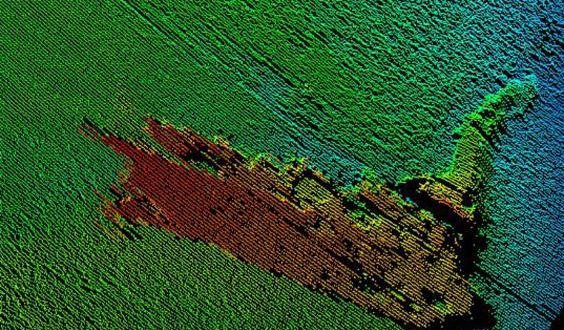Loch Ness Monster hunters disappointed after ‘Nessie’ find at bottom of loch turns out to be 1970s film prop.
An underwater robot mapping the depths of Loch Ness has found a “monster”, but not the lake’s mythical creature.
The sonar-equipped robot, named Munin, was developed by technology company Kongsberg Maritime and will study areas never accessed before in a bid to gather data about the deep loch’s little-understood topography.
Munin’s help with exploring the lake was elicited by the Loch Ness Project and Visit Scotland as part of Operation Groundtruth. During the following two weeks, Munin will dive as deep as 230m to provide evidence, amongst other revelations, about the likelihood of the existence of the Loch Ness monster.
“Because Munin can dive and navigate itself safely at great depth, it can approach features of interest and image them at extremely high resolution,” said Loch Ness Project leader Adrian Shine.
“We already have superb images of the hitherto difficult side-wall topography and look forward to discovering artefacts symbolic of the human history of the area.”
Loch Ness has been notoriously difficult to survey in the past due to its depth and steeply sloping side walls.
Munin can map vast areas to depths of 1,500m and has been used in the past to search for downed aircraft and sunken vessels.
Earlier data has suggested that theories about the existence of the so-called Nessie trench in the northern basin of the loch are likely untrue. Instead of the monster, the explorers have uncovered other interesting objects inside the loch, including a crashed Second World War bomber plane, a 100-year-old fishing vessel and parts of John Cobb’s speed record attempt craft Crusader, which crashed at more than 200mph in 1952.
“We are excited to see the findings from this in-depth survey by Kongsberg, but no matter how state-of-the-art the equipment is, and no matter what it may reveal, there will always be a sense of mystery and the unknown around what really lies beneath Loch Ness,” said VisitScotland chief executive Malcolm Roughead.
Despite no conclusive evidence of the famed monster, the mystery and interest surrounding Nessie is worth an estimated £60m to the Scottish economy, with hundreds of thousands of visitors travelling to Loch Ness every year in the hope of catching a glimpse.
Agencies/Canadajournal
 Canada Journal – News of the World Articles and videos to bring you the biggest Canadian news stories from across the country every day
Canada Journal – News of the World Articles and videos to bring you the biggest Canadian news stories from across the country every day



